

 The Accurate Reloading Forums
The Accurate Reloading Forums  THE ACCURATE RELOADING.COM FORUMS
THE ACCURATE RELOADING.COM FORUMS  Computers, Hi-Tech & Product Reviews
Computers, Hi-Tech & Product Reviews  Practical Photography For Hunters
Practical Photography For Hunters  Prime lens
Prime lensGo  | New  | Find  | Notify  | Tools  | Reply  |  |
| One of Us |
Quite awhile back Wink posted a series of photos he shot using his then new prime 28mm and 85mm Nikkor lenses. I was most impressed with the posted photos and decided to scrimp a bit and try to come up with a 28mm lens for myself. Alas, the 28mm was out of my budget range for the present, so I settled on the 35mm 1.8G for the time being. Using that lens on my D-7000 DX body, I've been mostly happy with the results. Attached are a few photos taken with that combination. Enjoy. 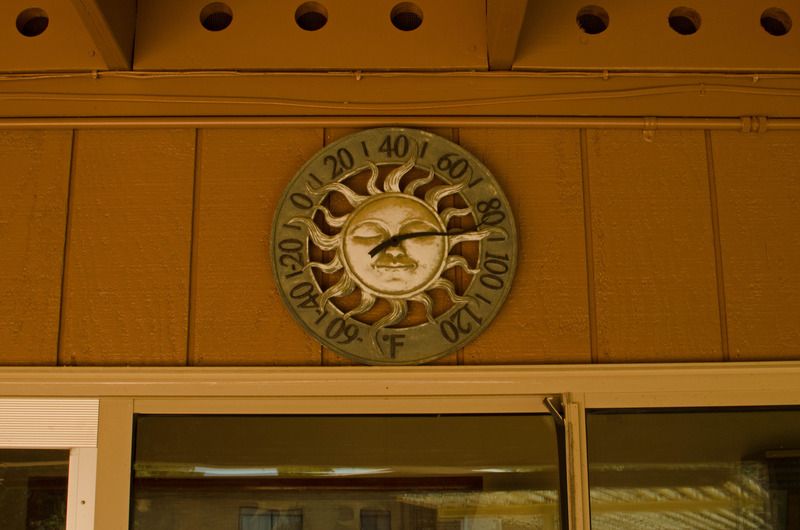 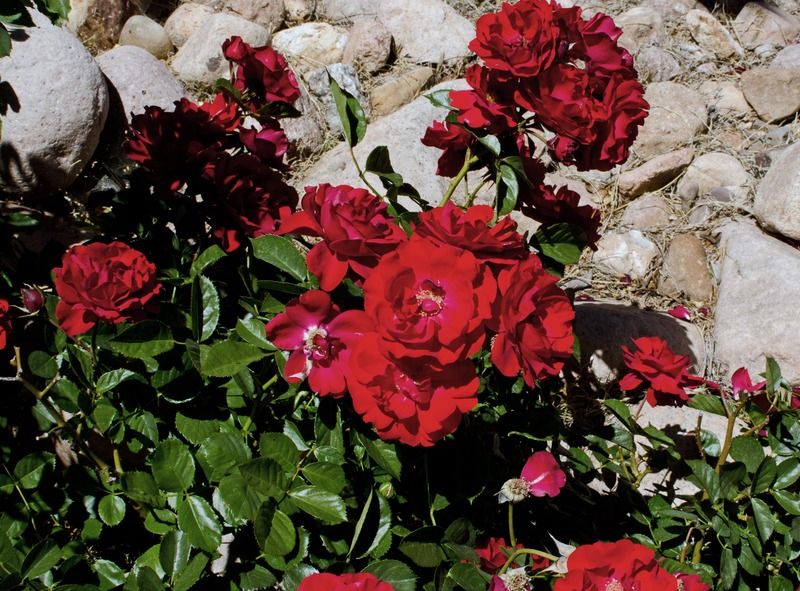 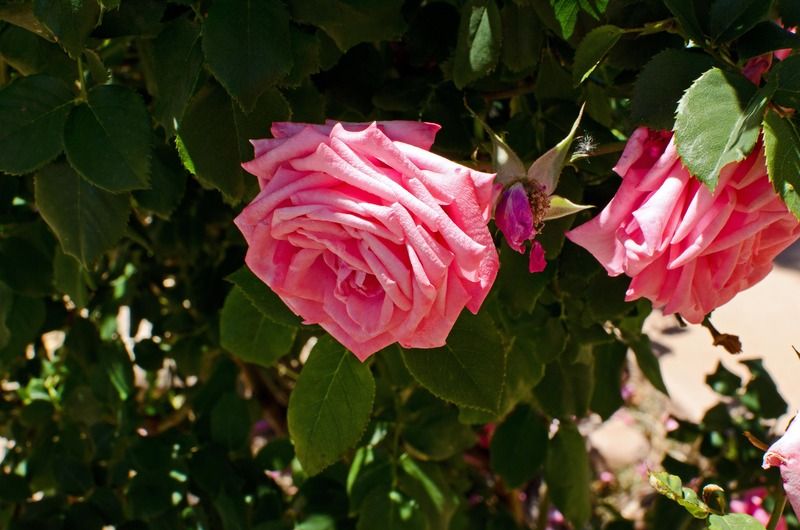  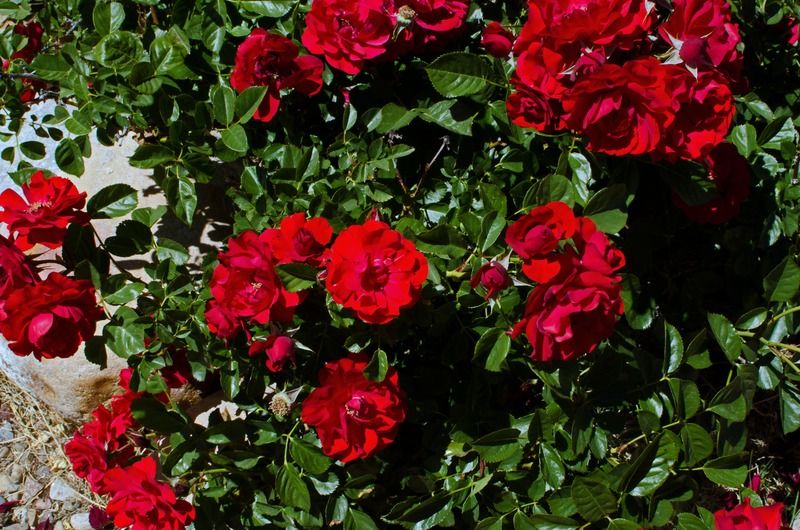 | ||
|
| One of Us |
Prime lens! I purchased a Sigma 50mm art lens; what a great one! | |||
|
| One of Us |
Good camera, good lens and it shows in your shots. The warm tones in whiskey bottle and clock shot are excellent. Red flowers are one subject I'm still trying to get right. All the Nikon sensors seem to oversaturate the reds and it's the devil taking care of it in post-processing. You have to fiddle with the HSL settings (hue, saturation, luminance) or desaturate the whole picture to not blow them out. While in Arizona a couple of weeks I took a stroll through the Desert Botanical Gardens, with no intention of photographing flowers (I don't think of flowers when I think of cactus) with my 28mm, which is no macro lens. Still, I was able to get get this and managed to desaturate the red/rose color enough to make it look natural to my eye.  _________________________________ AR, where the hopeless, hysterical hypochondriacs of history become the nattering nabobs of negativisim. | |||
|
| One of Us |
Wink, I agree with you completely on the over saturation of reds in Nikon gear. I've photographed the red rose bush many, many times and that particular shade of red is deeply oversaturated every time. I think I've worn out two Nikon sensors on that planted still have never gotten it natural looking. I'll keep at it until I get it right though. Wish I had known you were coming to Arizona, I'd have treated to a great Mexican lunch. | |||
|
| One of Us |
Tsquare, as the kids say, my bad. Next time I go I'll let everyone know. Maybe an AR lunch in Arizona wouldn't be a bad idea. As for the reds, if you use the histogram option on your camera screen you will be able to see if the red channel is overexposed, then correct exposure accordingly. That's part one, then when you post-process select just the red channel to slightly turn down saturation and luminescence to better equalize with the other channels. Use vibrance or color booster (depending on whatever it's called in your software) to richen the colors rather than the saturation slider. Anyway, that's what I do. _________________________________ AR, where the hopeless, hysterical hypochondriacs of history become the nattering nabobs of negativisim. | |||
|
| One of Us |
Wink, Many thanks. | |||
|
| One of Us |
By the way, I had lunch at El Charro in Tucson, on the way down to Tubac. Good restaurant. _________________________________ AR, where the hopeless, hysterical hypochondriacs of history become the nattering nabobs of negativisim. | |||
|
| One of Us |
Wink, El Charro is a very good Mexican bistro. A couple others in Tucson that I like are Casa Molina on Campbell and Macayo's on Ina I believe. I live about 80 miles from Tucson in Sierra Vista, so don't get unto the big city often. When I do though, David Miller, Curt Crum and I usually have lunch at Casa Molina. | |||
|
| One of Us |
| |||
|
| One of Us |
| |||
|
| One of Us |
| |||
|
| One of Us |
Excellent. _________________________________ AR, where the hopeless, hysterical hypochondriacs of history become the nattering nabobs of negativisim. | |||
|
| One of Us |
beautiful work. I have a 24mm Tamron MF not exactly a grade 1 lens  | |||
|
| One of Us |
Even my least sharp lens, including zooms, can give excellent results, if I do my part at capture and post-process with care. Tsquare2's Nikkor 35mm f/1.8G will be sharpest accross the frame at f/5.6. I've got the same lens, and unless I've got some depth-of-field issue I shoot in aperture priority set at f/5.6. In Arizona, where having enough light is not the problem it is in Northern Europe, I think I would leave a good polarizer filter on it all the time. By good I mean a Nikon Circular Polarizer, or better. There are so many little points of reflected light under the Arizona sun that complicate exposure and post-processing that once you get used to tuning in the filter you will wonder why you didn't use it all the time before. There are lots of webinars on how to use a polarizer in photography on the web. http://viewfinders.photo/learn...rcular-polarizer-cpl _________________________________ AR, where the hopeless, hysterical hypochondriacs of history become the nattering nabobs of negativisim. | |||
|
| One of Us |
Wink, Many thanks for the heads-up on the f5.6 setting. I've read a good bit in recent times that mot lenses are their sharpest around that aperture. I've been livening under the illusion (I guess anyway) that usually lenses were their sharpest when stopped down considerably.Living in Arizona as I do, I've used polarizing filters considerably back in the film days, but not that much since converting to digital. I'll have to dust off the filters and give them a try again. I followed your guidance and shot a couple more photos in the garden, all at f5.6. It seems to work out pretty well, but I'll have to drag out the tripod to really get a closer look. Thanks again.   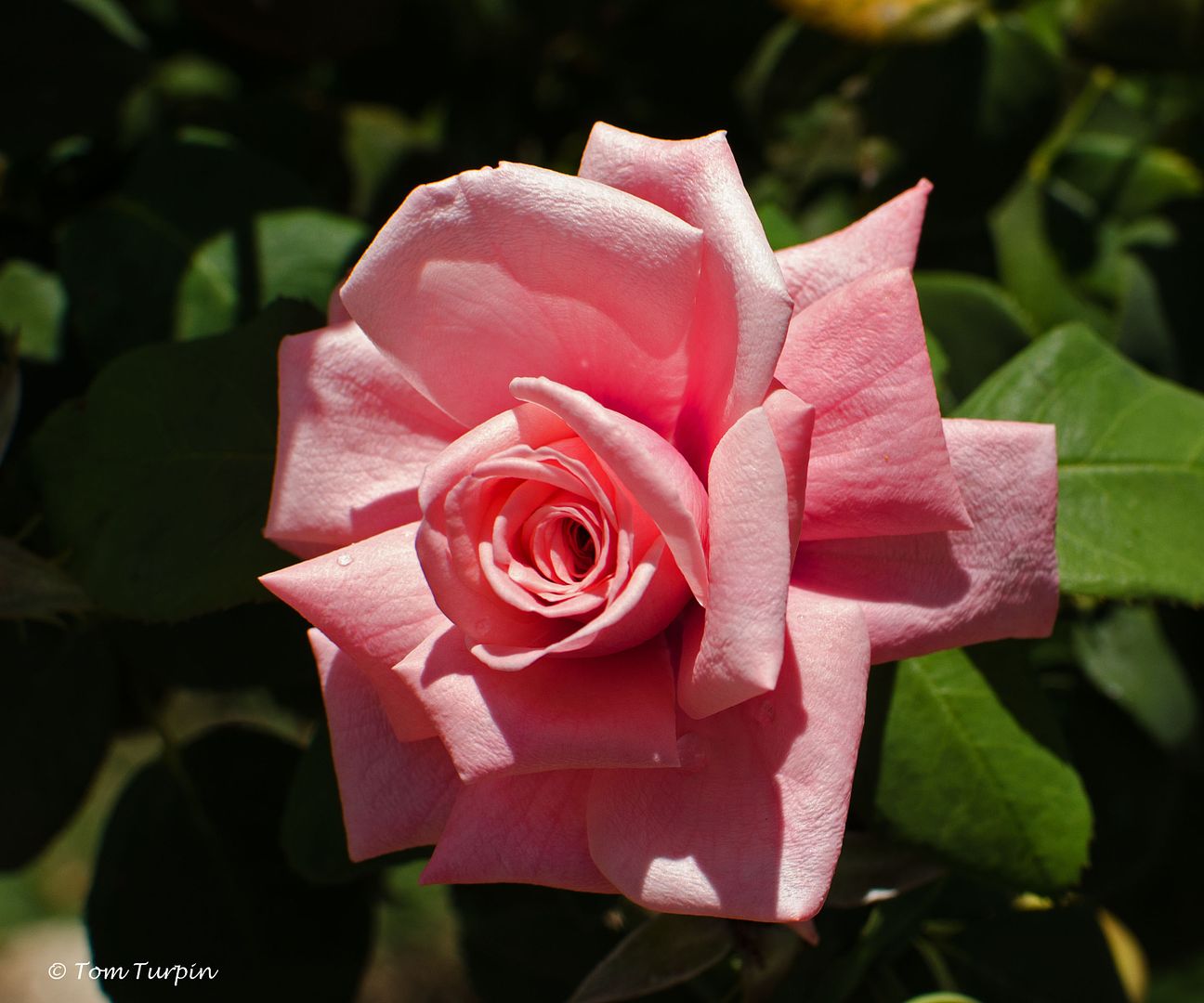 | |||
|
| One of Us |
With most digital sensor/lens combinations, diffraction starts to set in with f/8, usually getting worse with each increment up from there. Good lenses made for digital sensors sometimes go up to f/16 with manageable diffraction. But this is quibling about stuff most people won't see. If you need great depth of field, then go right up to f/11 or f/16. Since I'm guessing that you are going to continue with your flower photography, and if your Nikkor 35mm is the best lens in your bag, get a set of extension tubes and go wild. https://photographylife.com/what-is-an-extension-tube I own the Kenko set and use it mostly for copying slides from the film era, with that same 35mm lens. _________________________________ AR, where the hopeless, hysterical hypochondriacs of history become the nattering nabobs of negativisim. | |||
|
| One of Us |
Wink, Thanks again for all your sage advice. I've never used extension rings although I owned a bellows attachment for my Nikon F cameras at one time. I never used it enough to get familiar with it so finally sold it on eBay. I would like to be able to copy slides though, as I have transparencies going back to the Kodachrome ASA 10 days. At one time, Nikon made a pretty good scanner which sold for about $500 or so. By the time I decided to buy one, they had dropped the production of them. As to my flower photography, I'm not particularly enamored with flowers as a subject. It's just that I have some very pretty flowers in my back yard and they are a handy subject to photograph. I don't really have a favored subject although I do photograph a fair number of guns, engravings, and knives to compliment my writing on those subjects. I just enjoy photography in general, and on just about any subject. I don't believe that I've ever been totally satisfied with any of my images, but I'll keep after it. | |||
|
| One of Us |
If you buy the Nikon ES-1 slide copying adaptor and the extension tubes then you don't need a scanner, or a different lens. This is how I copied a few of my old Kodachromes. This is circa 1985:  Camera was a Nikon FM and the lens was a Vivitar 200mm if I remember correctly. There were still black rhino in Amboseli in decent numbers in those days. _________________________________ AR, where the hopeless, hysterical hypochondriacs of history become the nattering nabobs of negativisim. | |||
|
| One of Us |
Wink, you are certainly a fountain of photographic knowledge, I'll look into the adapter and extension rings. Nice rhino and photo. My first safari to Africa was to Zimbabwe in 1987. The first animal that I saw on that hunt was a black rhino that proved that I still knew how to climb a tree! By the way, I have a perfectly fine FM sitting on my desk about two feet from me. It was my third one. TT | |||
|
| One of Us |
Wink, I took your advice (mostly) and ordered the ES-1 from Adorama. Based upon my reading on the subject, it seemed that the ES-1 was produced with two lenses in mind, the Nikkor 2.8 55MM Micro lens and/or the Nikkor 2.8 60MM AF Micro lens. I have both of those lenses in my kit, although the 55MM lens is unusable due to a frozen focus ring. I still use the 60mm quite a bit so I ordered the BR-5 adapter ring to step down the 60mm lens to 52mm. If that don't work, then I'll go with the extension rings as well. They should be in this week and I'll let you know how they work for me. TT | |||
|
| One of Us |
Tom, If you use extension tubes (IIRC it's the 20mm tube) then the 35mm lens will work just fine. F/8 seems to keep vignetting to a minimum. That lens has a 52mm filter ring so no step down ring is necessary. Wink _________________________________ AR, where the hopeless, hysterical hypochondriacs of history become the nattering nabobs of negativisim. | |||
|
| One of Us |
Wink, A quick update. I received the ES-1 and BR-5 adapter in hopes of avoiding having to buy the extension ring set. The way the documentation was written, it seemed to infer that using the 60mm Micro lens didn't require them. Alas, that isn't the case. So, I ordered the set of Kenko tubes and they are scheduled for delivery on Friday. I'll give the combination a workout over the weekend and let you know what happens. Many thanks again for all your help and advice. TT | |||
|
| One of Us |
Was in California for Christmas. Below one with the 28mm and one with the 85mm of my daughter Claire at Will Rogers State Beach at Pacific Palisades.   Yes, I still like my primes. It's just a lot easier to get subject isolation and good IQ with them. Every day I get closer to buying the new Nikkor 105mm f/1.4. I tell myself that prices are going to go up so I better get it now. _________________________________ AR, where the hopeless, hysterical hypochondriacs of history become the nattering nabobs of negativisim. | |||
|
| One of Us |
I went ahead and bought the Nikkor 105mm f/1.4E lens mentioned above. It is a very good lens, supposedly the sharpest lens Nikon makes under 200mm, which puts it in the "exotics" class of lens. Normally I would wait until I've taken dozens of shots, the kind this lens is made for, which means portraits or people, with creamy out-of-focus backgrounds portraying the incredible bokeh of this lens, before posting anything. But the awful weather here pretty much limited me to taking a couple shots over the backyard fence of trees 200 to 300 meters away, when the sun decided to pop out for a couple of hours. This first example is pretty much straight out of the camera, no corrections for vignetting (which is pretty obvious), CA, etc. It is shot at f/1.4, usually the least sharp aperture of almost any lens. No additional color or contrast enhancements, nothing but what comes out of the camera, the NEF file as converted by Capture One software.  The next shot, taken seconds after the first, was converted with DxO software, vignetting corrected, cropped just slightly and the color boosted a tad.  Whenever you spend a lot of money on anything, especially camera stuff, you wonder if it will really be better than what you've already got. With this lens, there's no mistake, it is. _________________________________ AR, where the hopeless, hysterical hypochondriacs of history become the nattering nabobs of negativisim. | |||
|
| One of Us |
Looking great Wink. Can't wait for the weather to clear in France for more examples. No doubt, Nikon has a winner with that lens. TT | |||
|
| One of Us |
Decent weather today, meaning people came outdoors in greater numbers. Finally got to try out my new lens. Neighbor kid:  Girl walking:  Motorcycle:  I think I'm going to like playing with this one. Super sharp, nice bokeh, excellent transition from in-focus to out-of-focus areas. I guess I don't need to buy a Leica after all. _________________________________ AR, where the hopeless, hysterical hypochondriacs of history become the nattering nabobs of negativisim. | |||
|
| One of Us |
Wink, Looking great. I thought the weather in France was never going to change! Having lived in Germany for 9 years total, I know how fickle that middle European weather can be. I've still not decided whether I can live without the Sigma 18-35 1.8 or not.TT | |||
|
| One of Us |
I just ran accross this site and I am impressed with your knowledge. Great pictures. Are you handholding or do you at times use a tripod or some simular devise?. I had a brother who lived in AZ and the weather for photography is some of the best. Samm | |||
|
| One of Us |
Most of the time I'm handholding. Unless I know I'm going for some particular landscape shot or going to carry a very long telephoto, handheld it is. It's just too much stuff to lug around, most of the time. I cheat as much as possible, kind of like when I'm shooting a rifle. If I can find a rest or any other way to get steady, I use it. My favorite prime lenses don't have any vibration reduction technology, so I do have to use good technique. I've got two tripods (a heavy and a light) as well as a monopod. I've even got a shoulder-stock type of camera/lens mount (the no-longer-made BushHawk), which is good for mini-van safaris. _________________________________ AR, where the hopeless, hysterical hypochondriacs of history become the nattering nabobs of negativisim. | |||
|
| One of Us |
I hand hold most of the time also as after a while I have way too much stuff to pack. My next adventure is to photograph waterfalls with motion. For this I will be using a tripod. Samm | |||
|
| One of Us |
I've never shot waterfalls, but was reading about it just the other day: https://photographylife.com/ho...otograph-waterfalls/ _________________________________ AR, where the hopeless, hysterical hypochondriacs of history become the nattering nabobs of negativisim. | |||
|
| One of Us |
That is a good article. Depending on the conditions, light, location, and the like I see where every idea would help get the shot. Samm | |||
|
| One of Us |
Never shoot flowers from 10 AM to about 4 PM. Portraits either! | |||
|
| One of Us |
My best flower shots are in the shade, or on days with overcast skies. Not under harsh sunlight. I use a Canon 100mm macro lens for close-ups, and for things like this as well:  For the local sled dog races and skijoring I mostly use a Canon 200mm f/2.8L lens.   | |||
|
| One of Us |
direct overhead sunlight causes harsh shadows, which can be seen in some of the flower shots and portraits on this thread. But if you shoot those same subjects on very cloudy days you end up with very flat uninteresting photos that lack the roundness that you are looking for . Back when I was doing photography for a living ( a long time ago) I always tried to avoid shooting in mid day sun, instead preferring either open skylight; or early morning or late afternoon raking light for outdoor portraits. Otherwise you can end up with what I used to call raccoon eyes and deep shadows underneath the chin, both of which are not terribly attractive. But if you have to shoot in the sun there are a few things you can try. One is to place something above the subject to block the harsh overhead sun. Obviously, get it high enough so that it does not end up in the portrait. There are a number of these types of "gobos" or shades that are made commercially, or you can make something out of cardboard. Just for fun someday place a subject out in the open sun and make some portraits, and then have an assistant hold something far enough above the subject to block the harsh downlight and make a few more portraits. You will see a dramatic difference, and especially so if you also use a reflector to fill in any harsh shadows underneath the chin area. These techniques can also be used with other static subjects such as flowers. Then, the other thing you can do is use synchro sunlight flash, which is really nothing more than fill in flash, to try and eliminate the harsh effect of shadows caused by strong downward sunlight, To do it effectively you need a good flash meter unless you have a camera and flash that have fill in flash features that work with each other. remember, when you are working outside you have to base your exposure on the area that you cannot control, and then control what needs to be controlled. Since you cannot control the sun, you need to base your exposure on the sun when the predominant area in your photo is in the sun, and then control the harsh shadows by lightening them up a bit. That is because the dynamic range of exposure between sunlight and shadow cannot be adequately conveyed. Even though your eyes can see it, the film or the sensor cannot, meaning that if you expose for the sun something in dark shade will lose detail and turn black, whereas if you exposure for the shade something light in the sun will lose detail and be blown out. | |||
|
| One of Us |
Good points about how to redirect light to enhance the light on the subject. A few photos of flowers from my backyard (Canon 100mm macro lens and a 7D): Plum tree:  Columbine:   | |||
|
| One of Us |
And three grouse from last year's moose season in Alaska (used a Canon 400mm L lens and a 7D):    | |||
|
| One of Us |
One of numerous I took with a now old Canon EF-400mm L prime. Cropped:  | |||
|
| One of Us |
Excellent. _________________________________ AR, where the hopeless, hysterical hypochondriacs of history become the nattering nabobs of negativisim. | |||
|
| One of Us |
| |||
|
| Powered by Social Strata | Page 1 2 |
| Please Wait. Your request is being processed... |
|

Visit our on-line store for AR Memorabilia

